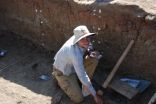INFORMATION:
http://www.aerzteblatt.de/pdf.asp?id=171327
One in 2 dies in hospital
2015-08-13
(Press-News.org) At home on the sofa, in a hospital bed, or in a care home: where a death takes place is always recorded on the death certificate. Until now, however, this information has never been collated and evaluated. In an Original Article in the current issue of Deutsches Ärzteblatt International (Dtsch Arztbl Int 112:496-504), Burkhard Dasch and his co-authors analyze for the first time the place of death records for Germany. What they found was that every second person died in a hospital; only one in four died at home.
The study evaluated more than 24 000 death certificates from Westphalia-Lippe--around 11 500 from 2001 and 12 500 from 2011--and revealed a trend in the distribution of places of death. In 2001, 27.5% of deaths occurred at home; by 2011 the figure was only 23%. People are also dying less often in hospital than previously (57.6% in 2001 vs. 51% in 2011). On the other hand, deaths in nursing or care homes are increasing. In 2001, only one in eight died in a home; in 2011 it was one in five. So far, not many patients are dying in palliative care units and hospices, but the numbers of deaths in these institutions are clearly on the rise.
ELSE PRESS RELEASES FROM THIS DATE:
Marks on 3.4-million-year-old bones not due to trampling, analysis confirms
2015-08-13
Marks on two 3.4 million-year-old animal bones found at the site of Dikika, Ethiopia, were not caused by trampling, an extensive statistical analysis confirms. The Journal of Human Evolution is publishing the results of the study, which developed new methods of fieldwork and analysis for researchers exploring the origins of tool making and meat eating in our ancestors.
"Our analysis clearly shows that the marks on these bones are not characteristic of trampling," says Jessica Thompson, an assistant professor of anthropology at Emory University and lead author of the study. ...
Apes may be closer to speaking than many scientists think
2015-08-13
MADISON, Wis. -- Koko the gorilla is best known for a lifelong study to teach her a silent form of communication, American Sign Language. But some of the simple sounds she has learned may change the perception that humans are the only primates with the capacity for speech.
In 2010, Marcus Perlman started research work at The Gorilla Foundation, where Koko has spent more than 40 years living immersed with humans -- interacting for many hours each day with psychologist Penny Patterson and biologist Ron Cohn.
"I went there with the idea of studying Koko's gestures, but ...
More details on origin of world's favorite beer-making microbe
2015-08-13
MADISON, Wis. -- The crucial genetic mashup that spawned the yeast that brews the vast majority of beer occurred at least twice -- and both times without human help -- according to a University of Wisconsin-Madison study published Aug. 11 in the journal Molecular Biology and Evolution.
Lager yeast, a hybrid that thrives in cold temperatures, is used in lager beer production, which accounts for about 94 percent of the world's beer.
And while 15th century Bavarian monks invented lager beer, they probably did not deliberately cause the hybridizations detailed by a team ...
Young, Jupiter-like planet discovered
2015-08-13
LOS ALAMOS, N.M., August 13, 2015--A team of researchers has discovered a Jupiter-like planet within a young system that could provide a new understanding of how planets formed around our sun.
The new planet, called 51 Eridani b, is the first exoplanet discovered by the Gemini Planet Imager (GPI), a new instrument operated by an international collaboration headed by Bruce Macintosh, a professor of physics in the Kavli Institute at Stanford University. It is a million times fainter than its star and shows the strongest methane signature ever detected on an alien planet, ...
APA review confirms link between playing violent video games and aggression
2015-08-13
WASHINGTON - Violent video game play is linked to increased aggression in players but insufficient evidence exists about whether the link extends to criminal violence or delinquency, according to a new American Psychological Association task force report.
"The research demonstrates a consistent relation between violent video game use and increases in aggressive behavior, aggressive cognitions and aggressive affect, and decreases in prosocial behavior, empathy and sensitivity to aggression," says the report of the APA Task Force on Violent Media. The task force's review ...
Studies reveal how anesthesia's brain effects differ in older adults and in children
2015-08-13
Recent Massachusetts General Hospital (MGH) investigations into the neurobiology underlying the effects of general anesthesia have begun to reveal the ways different anesthetic agents alter specific aspects of the brain's electrical signals, reflected by EEG (electroencephalogram) signatures. While those studies have provided information that may lead to improved techniques for monitoring the consciousness of patients receiving general anesthesia, until now they have been conducted in relatively young adult patients. Now a series of papers from MGH researchers is detailing ...
The stomach is the way to a woman's heart, too
2015-08-13
You've heard that romance starts in the kitchen and not in the bedroom. Well, researchers at Drexel University finally have the science to support that saying - but not the way you might think.
In a new study published online in the journal Appetite, researchers found that women's brains respond more to romantic cues on a full stomach than an empty one. The study explored brain circuitry in hungry versus satiated states among women who were past-dieters and those who had never dieted.
The study's first author Alice Ely, PhD, completed the research while pursuing a ...
Lawrence Livermore scientists discover new young planet
2015-08-13
For the first time, Lawrence Livermore scientists as part of an international team, have discovered the most Jupiter-like planet ever seen in a young star system, lending clues to understanding how planets formed around our sun.
Using a new advanced adaptive optics (AO) device on the Gemini Planet Imager (GPI) on the Gemini South Telescope in Chile, the team took an image of the planet, which is about twice the size of Jupiter.
Called 51 Eridani b, the planet is the first in a wave of discoveries by a new generation of planet-hunting instruments, and could help scientists ...
Prehistoric carnivore dubbed 'scarface' discovered in Zambia
2015-08-13
Scientists at The Field Museum have identified a new species of pre-mammal in what is now Zambia. Thanks to a unique groove on the animal's upper jaw, it was dubbed Ichibengops (Itchy-BEN-gops), which combines the local Bemba word for scar (ichibenga), and the common Greek suffix for face (ops). Put simply: Scarface.
Believed to be roughly the size of a dachshund, Ichibengops lived around 255 million years ago, and was a member of Therocephalia, a group of ancient mammal relatives that survived the largest mass extinction in history (the Permian-Triassic extinction). ...
NASA's Hubble finds supernovae in 'wrong place at wrong time'
2015-08-13
Scientists have been fascinated by a series of unusual exploding stars -- outcasts beyond the typical cozy confines of their galaxies. A new analysis of 13 supernovae -- including archived data from NASA's Hubble Space Telescope -- is helping astronomers explain how some young stars exploded sooner than expected, hurling them to a lonely place far from their host galaxies.
It's a complicated mystery of double-star systems, merging galaxies, and twin black holes that began in 2000 when the first such supernova was discovered, according to study leader Ryan Foley, University ...


